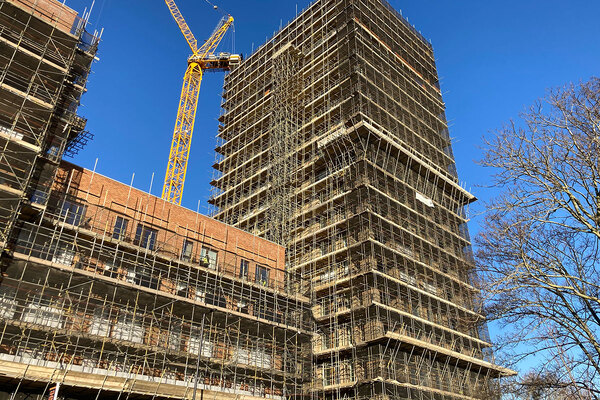You are viewing 1 of your 1 free articles
London’s biggest landlords to provide temporary accommodation for councils
London’s biggest housing associations have drawn up plans to become temporary accommodation providers for councils, Inside Housing can reveal.
The G15 group is exploring selling or leasing empty properties, empty new build homes and homes eligible for buy-backs to London councils to ease the capital’s temporary accommodation shortage.
Landlords could also lease empty development sites to London boroughs to build temporary modular homes, known as “meanwhile” housing.
The initiative, nicknamed Project 123, was set up in August 2023 following figures which showed that one in 50 Londoners are now homeless, including one in 23 children.
The shortage of temporary accommodation has meant councils are housing a growing number of their most vulnerable residents outside the capital, away from vital services and support networks.
The G15, which is currently chaired by L&Q chief executive Fiona Fletcher-Smith, and London boroughs will engage with politicians, planning authorities and finance partners before entering stock transfer negotiations from January 2024.
A report published by L&Q on the August summit between the G15 and London Councils stated: “The temporary accommodation issue is at crisis level and there is an urgent need for the G15 to help LAs [local authorities] alleviate this dire situation.”
One potential “quick win” identified by the report was to lease homes that are safe to occupy but are currently unmortgageable due to External Wall System 1 form issues.
Fixed-term leases could be offered with the option for local authorities to buy the homes outright once remediation works are complete. Alternatively, housing associations could retain ownership of the homes.
The report noted that this option may be best suited for street-level properties to avoid management issues arising from ‘pepper-potting’ temporary accommodation within blocks of flats.
Landlords could also sell or lease empty properties that cannot be sold on the open market due to restrictions with clawback or Section 106 agreements.
Bulk purchases of empty new build properties “at a discount against open market value” could assist with viability, while other funding streams including external finance, recycled capital grant receipts and Right to By receipts will also be explored.
The report identified other challenges for the programme, including issues around who manages the temporary accommodation, potential community and political opposition to temporary accommodation, and the cost of works to bring empty properties up to liveable standards.
It noted that using empty development sites for temporary ‘meanwhile’ housing would provide “good-quality homes” but that modular providers were “dwindling” due to viability issues. The homes would typically be leased for a minimum of five to 10 years, up to a maximum of 15 years.
Councils and housing associations will engage with the GLA and the Department for Levelling Up, Housing and Communities to understand the flexibilities around existing grant requirements and further potential grant funding for temporary accommodation.
There are currently more than 61,000 households in temporary accommodation in London. That is roughly 170,000 people, which is equivalent to the population of an entire London borough.
Between January and March 2023, nearly 80,000 households faced homelessness in England, an increase of 10% on last year.
A spokesperson for the Mayor of London said: “Across the country, it is shameful that there are now a record number of households who are homeless in temporary accommodation, including more than 131,000 children.
“In London, the Mayor is proud to have helped deliver record-breaking affordable homebuilding, including the highest level of council housebuilding in the capital since the 1970s."
“However, the current crisis in temporary accommodation shows there is much more that needs to be done. In the absence of any significant Government support, we welcome important initiatives like Project 123 and we’ll continue to work with London’s councils and housing associations to explore what else we can do to help give every Londoner a stable and genuinely affordable home.”
Update: at 03.15pm, 03.10.23
The headline and standfirst of this story were changed from ‘London’s biggest landlords to provide temporary accommodation for the Greater London Authority’ to ‘London’s biggest landlords to provide temporary accommodation for councils’. No backing from the Greater London Authority has yet been given to any of the scenarios outlined.
Sign up for our homelessness bulletin
Already have an account? Click here to manage your newsletters












